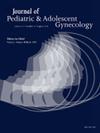不作为尽管动机:评估系统和个人障碍儿科医生后多布斯紧急避孕使用。
IF 1.8
4区 医学
Q3 OBSTETRICS & GYNECOLOGY
引用次数: 0
摘要
目的:继美国最高法院Dobbs诉杰克逊妇女健康案(Dobbs)的判决和随后堕胎渠道的变化之后,增加青少年的紧急避孕(EC)渠道至关重要。第一步是了解供应商对dobbs后EC的知识、态度和实践。方法:这项基于互联网的横断面调查于2023年11月至2024年1月期间发送给三个普通儿科初级保健系统的提供者。问题涉及电子商务知识、态度(感知到的障碍和对增加电子商务处方的期望支持)和多布斯后的实践。结果:共51人。大多数(81%)提供者认为青少年EC处方在多布斯事件后更为重要,但很少(7%)提供者改变了自己的处方做法。总体而言,提供者的平均知识得分为71%。更接近培训的提供者有更高的EC知识得分(77%对68%,p = 0.02),通常愿意提供EC的提供者也是如此(72%对58%,p=0.004)。城市和农村地区的提供者比郊区的同行更有可能开出处方EC(城市54%,农村40%,郊区16%,p = 0.04)。引发了各种障碍,最常见的是缺乏对电子商务的认识和知识。超过一半的受访者指出,他们更有可能在电子病历中内置临床决策支持(69%),在电子病历中设置订单(57%)和教育课程(55%)的情况下开电子病历。讨论:本研究强调了加强儿科医疗服务提供者EC教育的强烈需求,并强调了促进更容易、更自信的EC处方的系统因素。本文章由计算机程序翻译,如有差异,请以英文原文为准。
Inaction Despite Motivation: Assessing Systemic and Personal Barriers to Pediatricians’ Post-Dobbs Emergency Contraception Utilization
Purpose
Following the US Supreme Court's Dobbs vs Jackson Women's Health (Dobbs) decision and subsequent changes to abortion access, increasing emergency contraception (EC) access for adolescents is vital. The first step is understanding providers’ knowledge, attitude and practices regarding EC post-Dobbs.
Methods
This cross-sectional internet-based survey was sent to providers within 3 general pediatric primary care systems from November 2023 to January 2024. Questions addressed EC knowledge, attitudes (perceived barriers and desired support to increase EC prescription) and practices post-Dobbs.
Results
There were 51 participants. Most (81%) providers felt adolescent EC prescription was more important post-Dobbs, but very few (7%) had increased their own prescribing practices. Overall, providers had a mean knowledge score of 71%. Providers closer to training had a higher EC knowledge score (77% vs 68%, P = .02), as did providers who were generally willing to provide EC (72% vs 58%, P = .004). Providers in urban and rural areas were more likely to have prescribed EC than suburban counterparts (54% urban, 40% rural, 16% suburban, P = .04). Various barriers were elicited, most commonly relating to lack of awareness and knowledge about EC. Over half of respondents noted they would be more likely to prescribe EC with clinical decision support built into the EMR (69%), an order set in the electronic medical record (57%), and education sessions (55%).
Discussion
This study highlights a strong need to bolster provider EC education in pediatrics and address systems factors that will facilitate easier, more confident EC prescription.
求助全文
通过发布文献求助,成功后即可免费获取论文全文。
去求助
来源期刊
CiteScore
3.90
自引率
11.10%
发文量
251
审稿时长
57 days
期刊介绍:
Journal of Pediatric and Adolescent Gynecology includes all aspects of clinical and basic science research in pediatric and adolescent gynecology. The Journal draws on expertise from a variety of disciplines including pediatrics, obstetrics and gynecology, reproduction and gynecology, reproductive and pediatric endocrinology, genetics, and molecular biology.
The Journal of Pediatric and Adolescent Gynecology features original studies, review articles, book and literature reviews, letters to the editor, and communications in brief. It is an essential resource for the libraries of OB/GYN specialists, as well as pediatricians and primary care physicians.

 求助内容:
求助内容: 应助结果提醒方式:
应助结果提醒方式:


